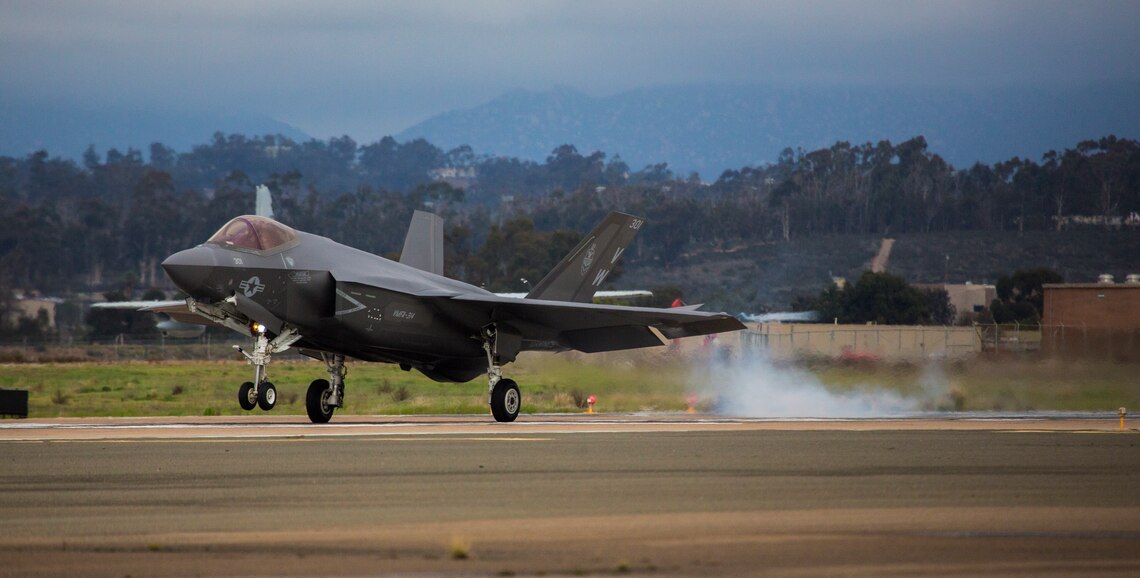
Marine Corps and aviation history was made as 3rd Marine Aircraft Wing welcomed its first F-35C Lightning II fighter jet to Marine Fighter Attack Squadron (VMFA) 314 and MCAS Miramar on Jan. 21.
Lt. Col. Cedar Hinton, commanding officer of VMFA-314, flew the aircraft from Naval Air Station Lemoore, California to MCAS Miramar.
“It should be no surprise that VMFA-314 is once again leading the way into the next generation of fighter attack aircraft,” said Hinton.
The squadron’s history began with its commissioning in 1943 at MCAS Cherry Point, North Carolina, as the “Bob’s Cats.” In 1952, they were the first
squadron in 3rd MAW to transition to jet aircraft and fly the F-9F Panther.
In 1957, they officially became the “Black Knights” with the arrival of the F-4D Skyray. In October 1961, the “Black Knights” were the first Marine
Corps squadron to transition to the F-4B Phantom and in 1982, the first in the Department of the Navy to fly the F/A-18 Hornet.
The “Black Knights” have proven themselves time and again from campaigns in the South Pacific to the Vietnam War and from Operation El Dorado Canyon to the Global War on Terror. VMFA-314’s storied history should give the American people confidence that the “Black Knights” will continue to fix, fly, and fight the next generation of aircraft.
The F-35C is one of three variants fielded by the Department of Defense. It is a result of decades of advancements that provide aviation capabilities
previously thought unattainable.
The “C” variant was designed to operate from an aircraft carrier and is the first 5th generation long-range stealth strike fighter jet designed for that
mission. The F-35C’s control surfaces and landing gear are better equipped for carrier operation than the other variants. The F-35C is equipped with
larger internal fuel storage, which when combined with its ability to refuel in-flight, extends its range and allows for enhanced flight time when
compared to other aircraft.
“Transitioning a squadron into a new aircraft with many new Marines comes with a lot of challenges,” said Hinton. “However, it also provides a unique opportunity to start fresh and build a strong squadron culture from the ground up. We are all extremely excited to ensure the ‘Black Knights’ continue our legacy of leading from the front as we deliver this new capability to 3rd MAW.”
3rd MAW continues to “Fix, Fly, and Fight” as the Marine Corps’ largest aircraft wing and remains combat-ready, interoperable, deployable on short notice, and lethal when called into action.



